Submitted by Sadia Siddiqui
Tidda: A Playful Installation Bringing Joy to Children in Marginalized Urban Communities
Pakistan Architecture News - Jun 26, 2025 - 15:41 2892 views
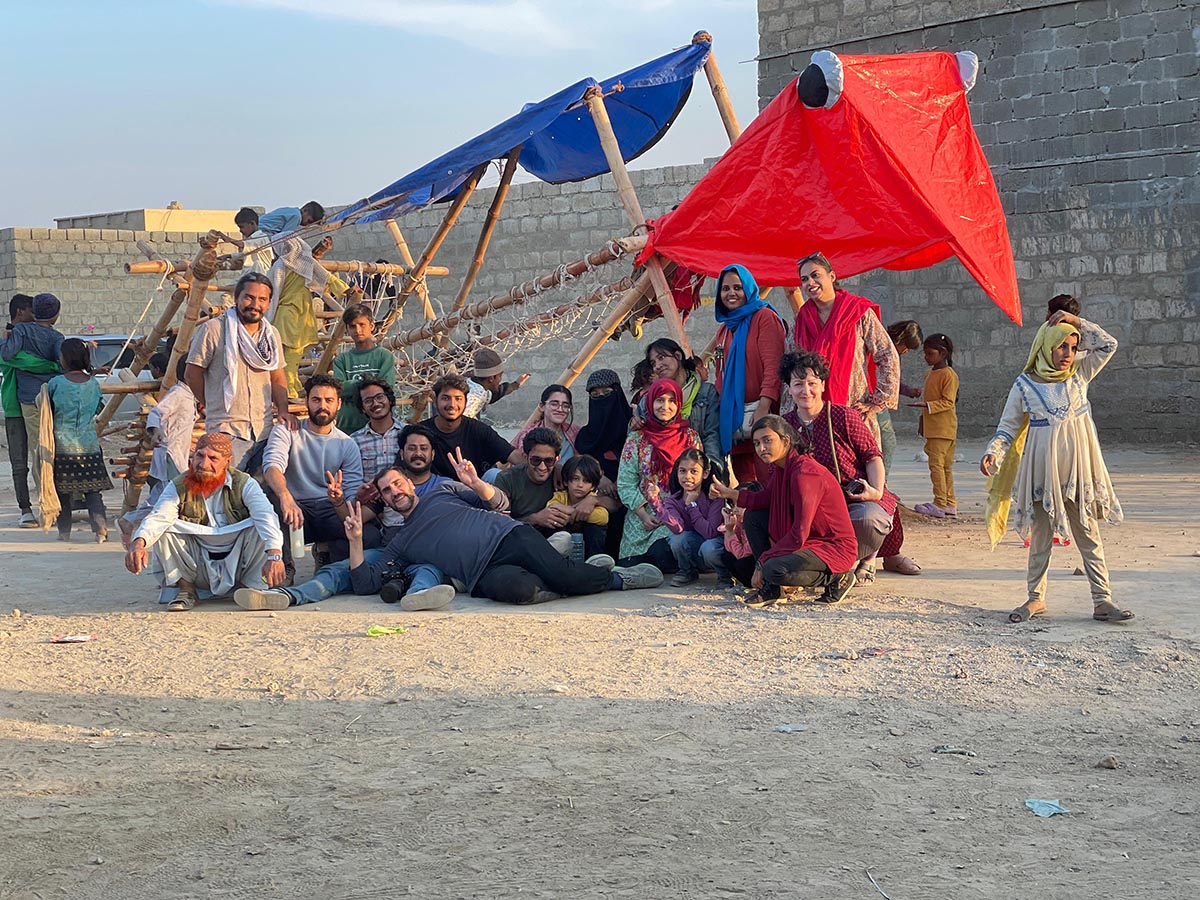
According to a World Bank report published in 2018 and updated in 2025, around 45% of Pakistanis live below the poverty line. While many struggle to make ends meet, finding moments of joy in such dire conditions often feels like a challenge in itself. Unhygienic living conditions, sweltering heat, and congested homes leave little room for peace amid everyday chaos. Yet, children have a unique way of navigating these difficulties. Their capacity to find happiness remains undeterred by their environment, as observed by architect Wajiha Siddiqui and her team while building a random playful installation for children affected by 2022 torrential floods in rural areas of Pakistan. Even in the most testing circumstances, Wajiha noticed, children instinctively seek joy through the medium of play.
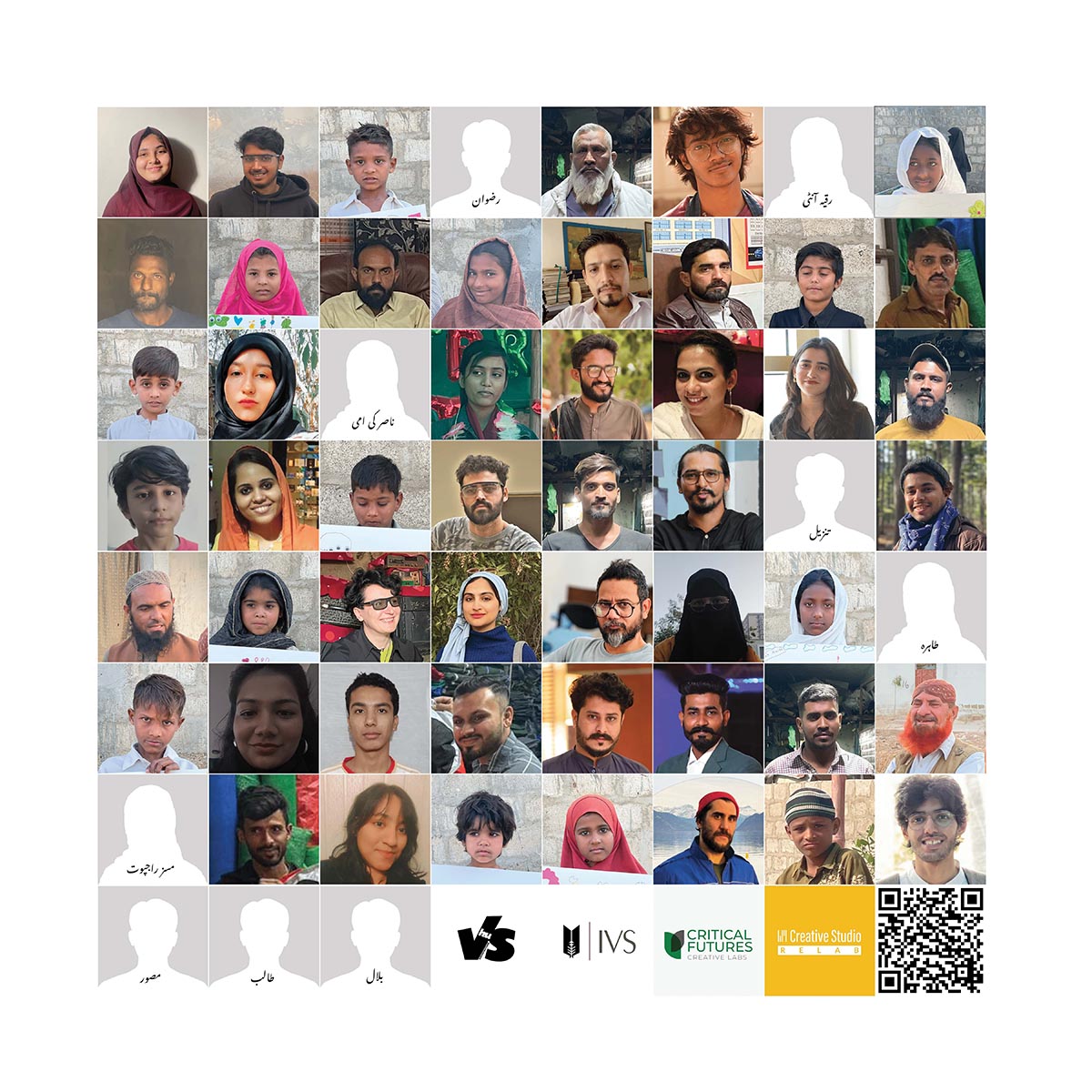
Although children have an innate ability to create playful experiences, growing inequality in Pakistan has made it increasingly difficult for many urban poor to access public spaces such as parks, gardens, playgrounds, sports facilities, or recreational areas. The disparity goes even further—many do not even have access to neighborhood parks. With over 51% of Pakistani children aged 5 to 9 out of school, as reported in "The Missing Third of Pakistan", their only option is often to play on roadsides, footpaths, streets, or leftover spaces. Wajiha Mehdi saw this lack of safe play areas as a challenge and an opportunity.
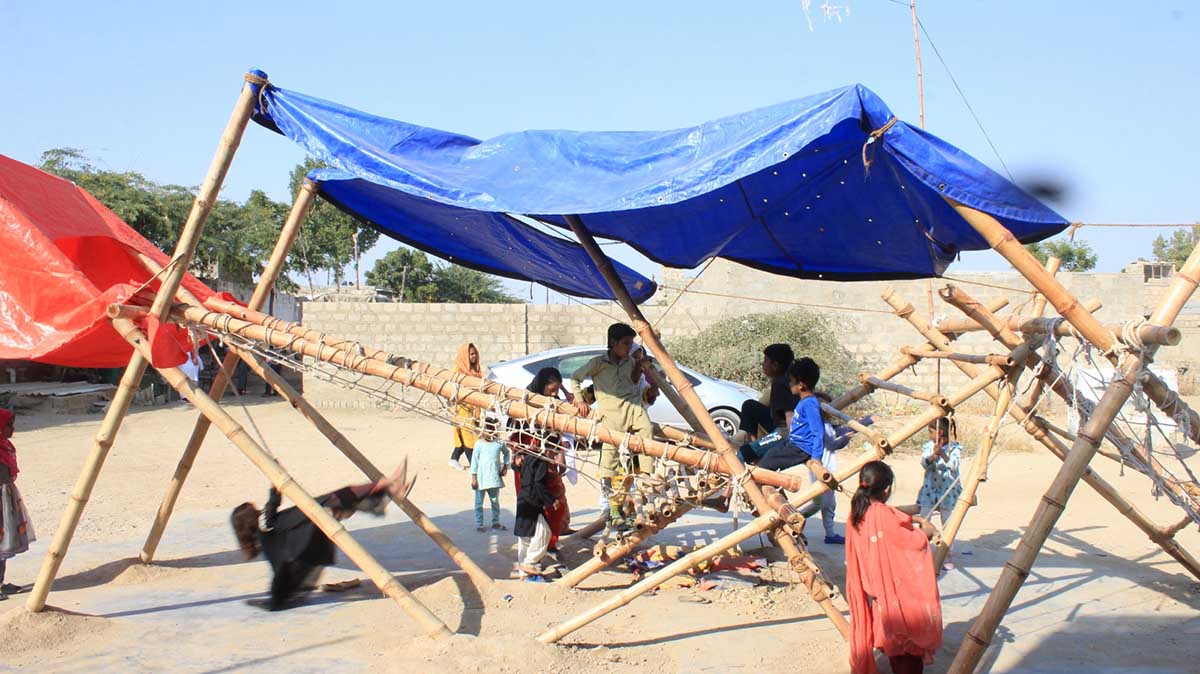
She decided to explore the potential of playful installations for children living in Surjani Town, Karachi. As a resident of the Critical Futures – Creative Labs Residency at the Indus Valley School of Art and Architecture, she wanted to experiment with ideas that extended beyond environmental or economic sustainability. With over 60% of Karachi’s population living in informal settlements, space for children to play is extremely limited. Therefore, instead of designing conventional parks, Wajiha chose to create a playful installation.
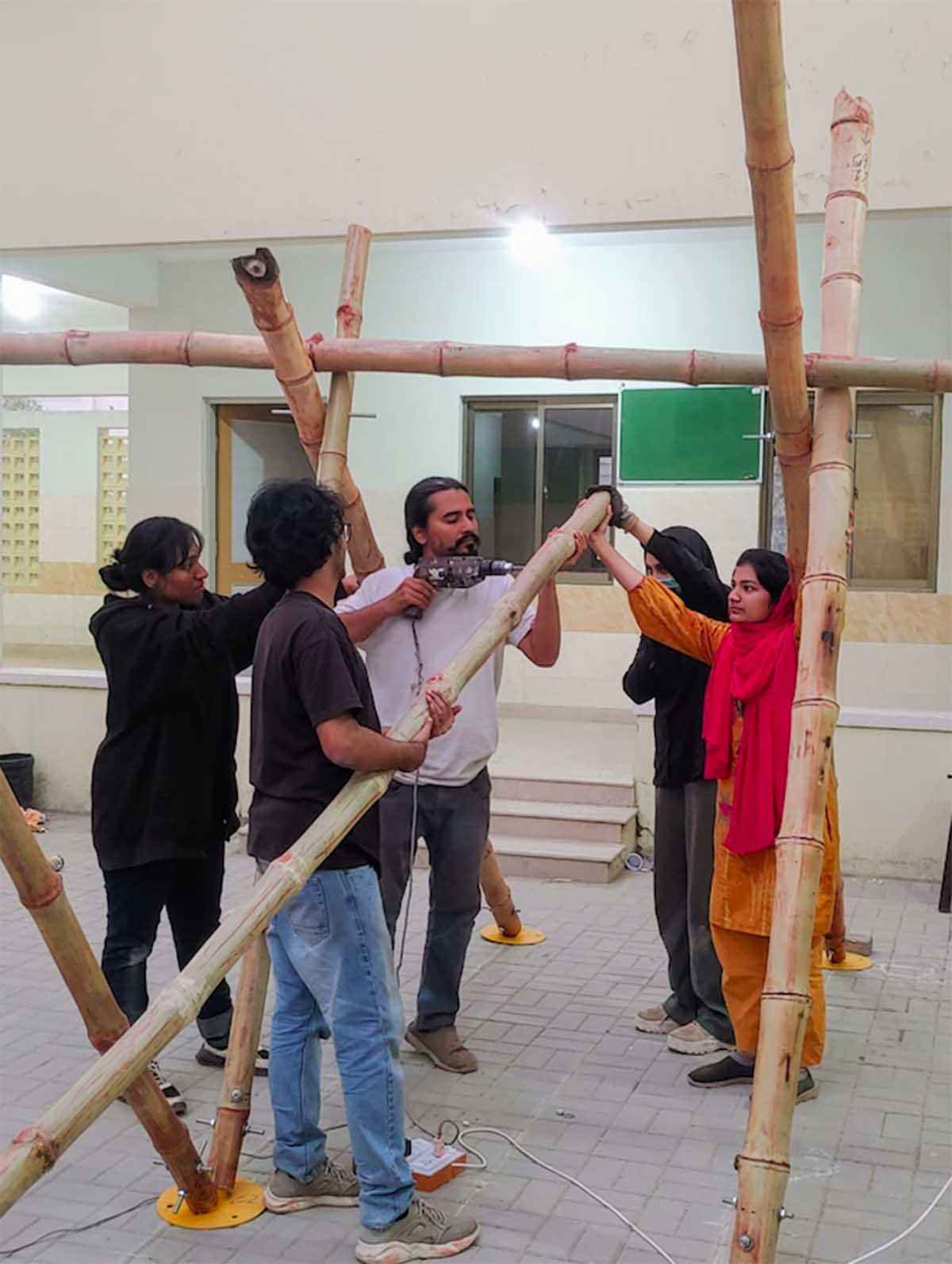
Wajiha explored social sustainability through participatory design during her residency. As part of this, she conducted a workshop at the university, where students received essential training in tool usage, idea generation, and understanding the real-life dynamics of informal settlements. The resulting design reflects the adaptable nature of such communities—it can be easily assembled and disassembled as needed, ensuring flexibility and relevance to the context.
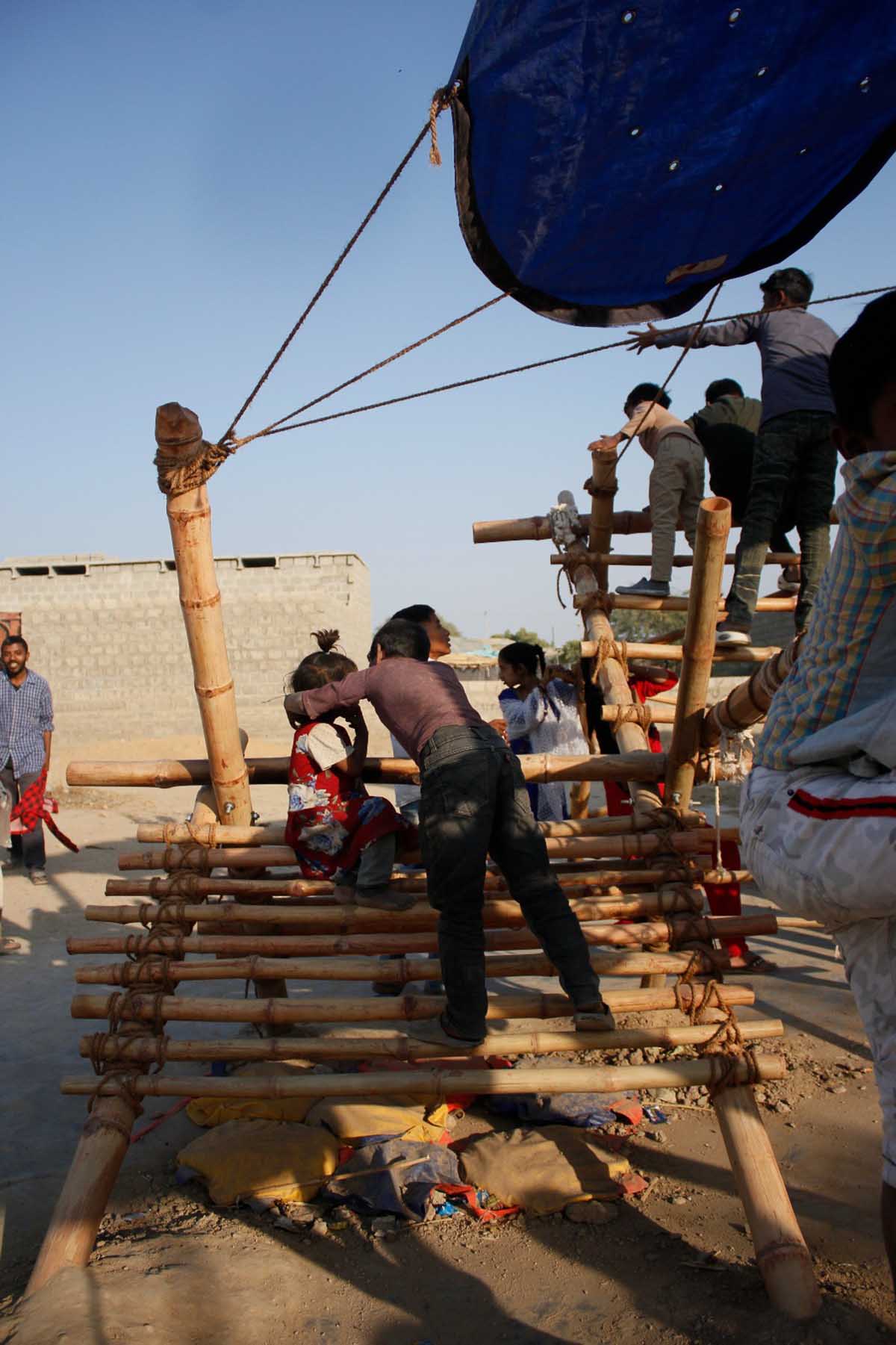
The installation, called Tidda—which means grasshopper—is not just a structure for play. It is a symbolic gesture that demonstrates how social sustainability can be achieved through community-centered design. Made with sustainable materials like bamboo and rope, Tidda draws inspiration from the grasshopper, an insect known for its lively, dynamic behavior. Grasshoppers can jump, fly, and even produce sound by rubbing their legs against their wings—a form of communication that mirrors the energetic, vocal nature of children who love to run, jump, and play in groups.
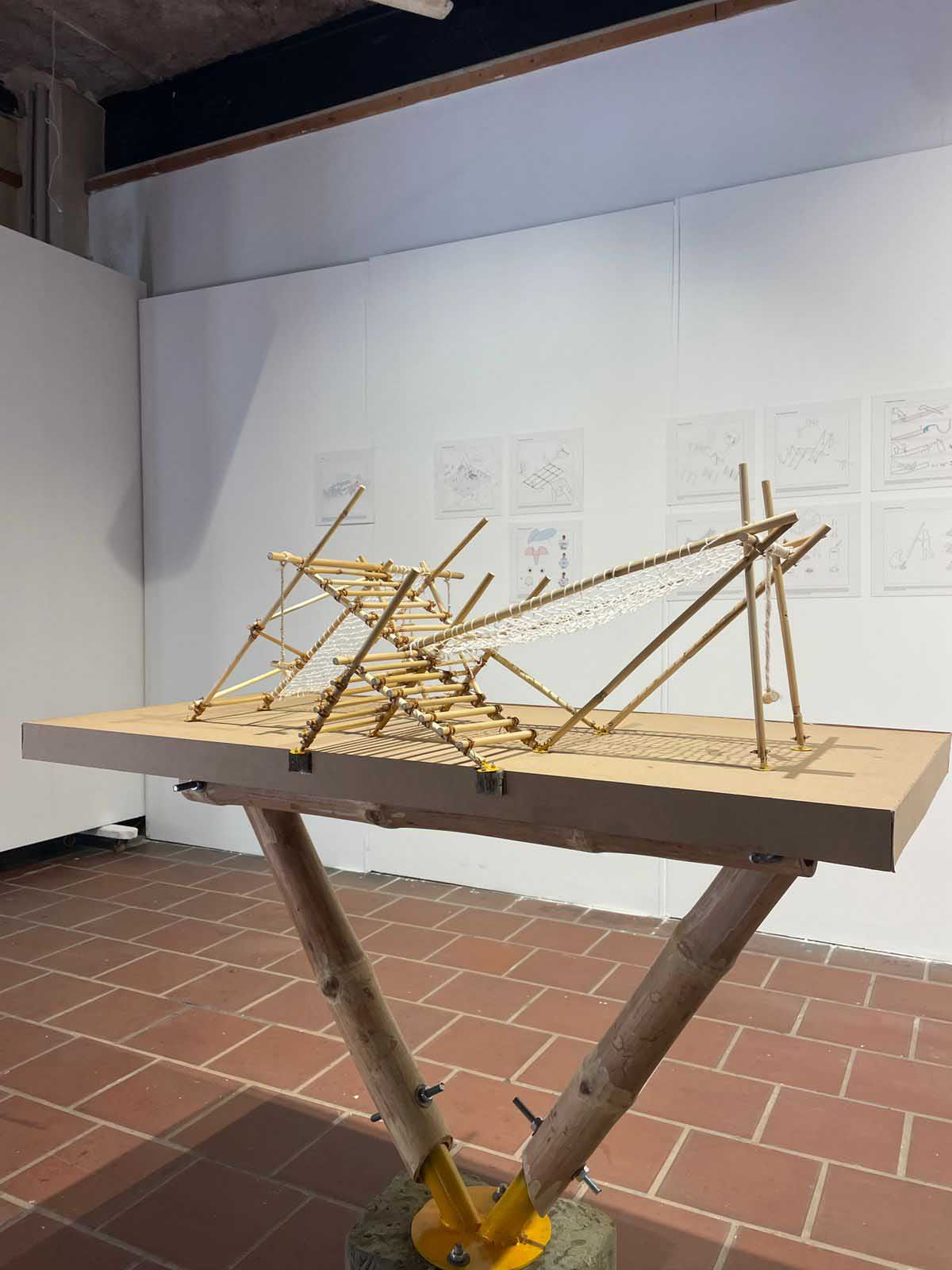
Tidda was presented at the Critical Futures Conference 2025 on 7-8 February, 2025 and sparked important conversations about how joy can be cultivated by creating a sense of belonging and ownership—especially when children and community voices are integrated into the design process. While Wajiha presented Tidda as a Creative Labs resident, the project was a collective effort involving students, architects from WM Creative Studio, members of the Surjani Town community, and the Social Youth NGO.
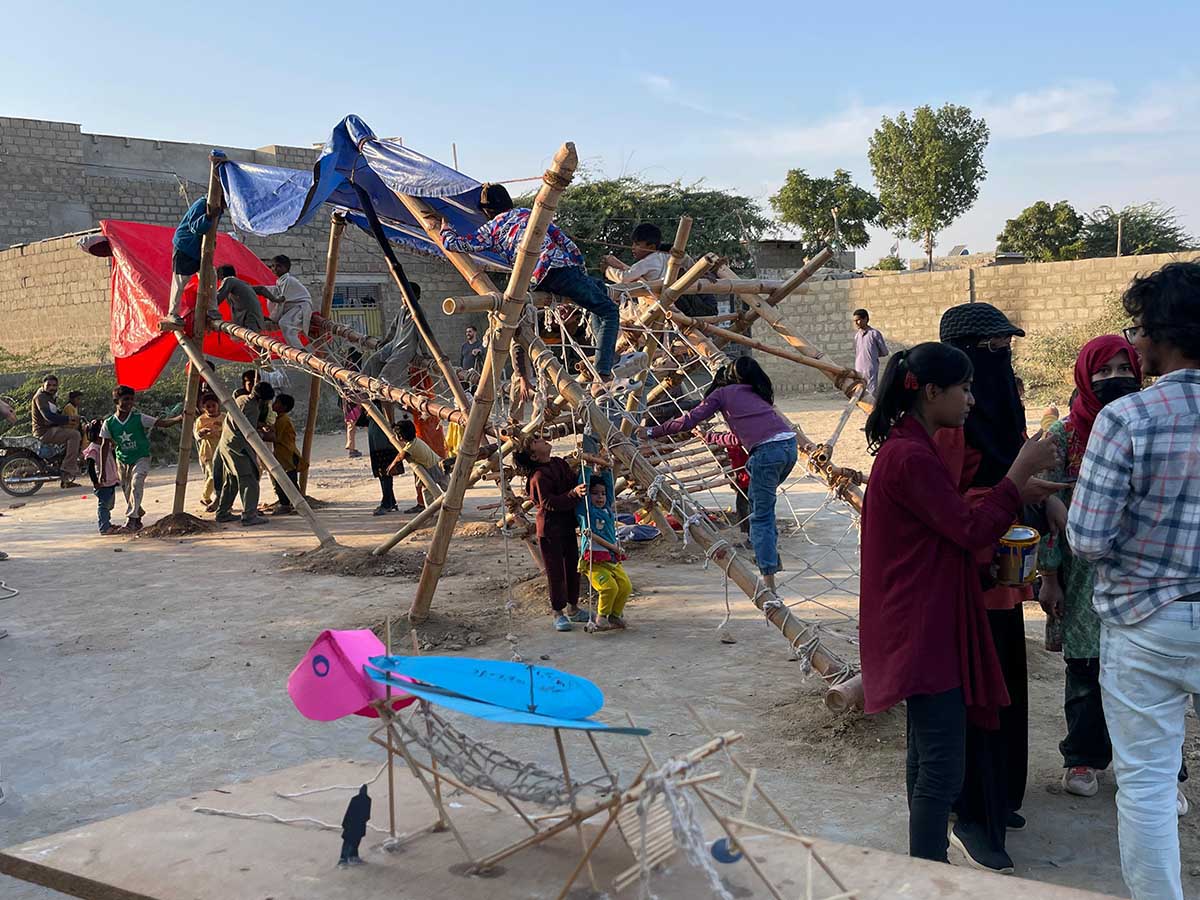
Beyond being a space for play, Tidda serves as a learning ground—instilling in students and young architects a deeper sense of responsibility toward real communities, their adversities, and the transformative potential of creative, inclusive placemaking to spark joy and resilience.
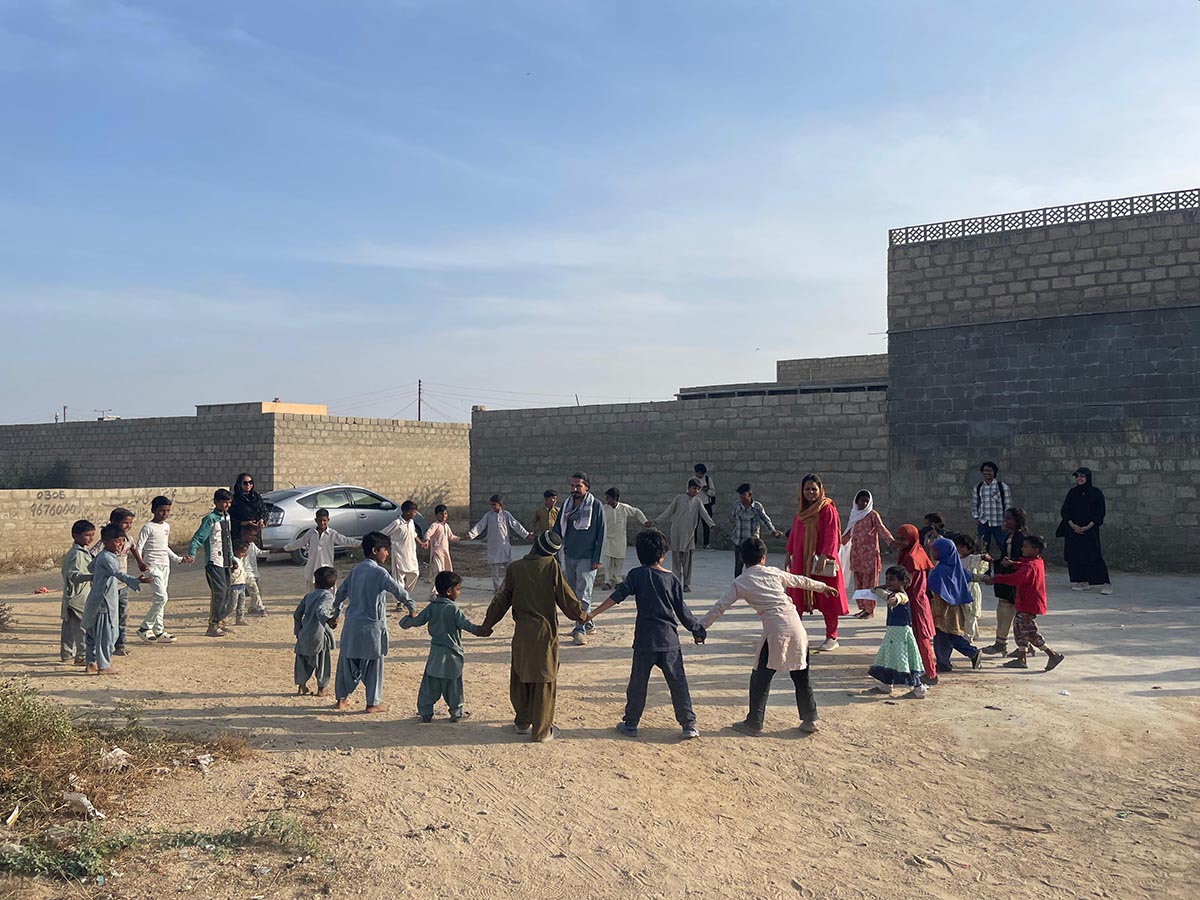
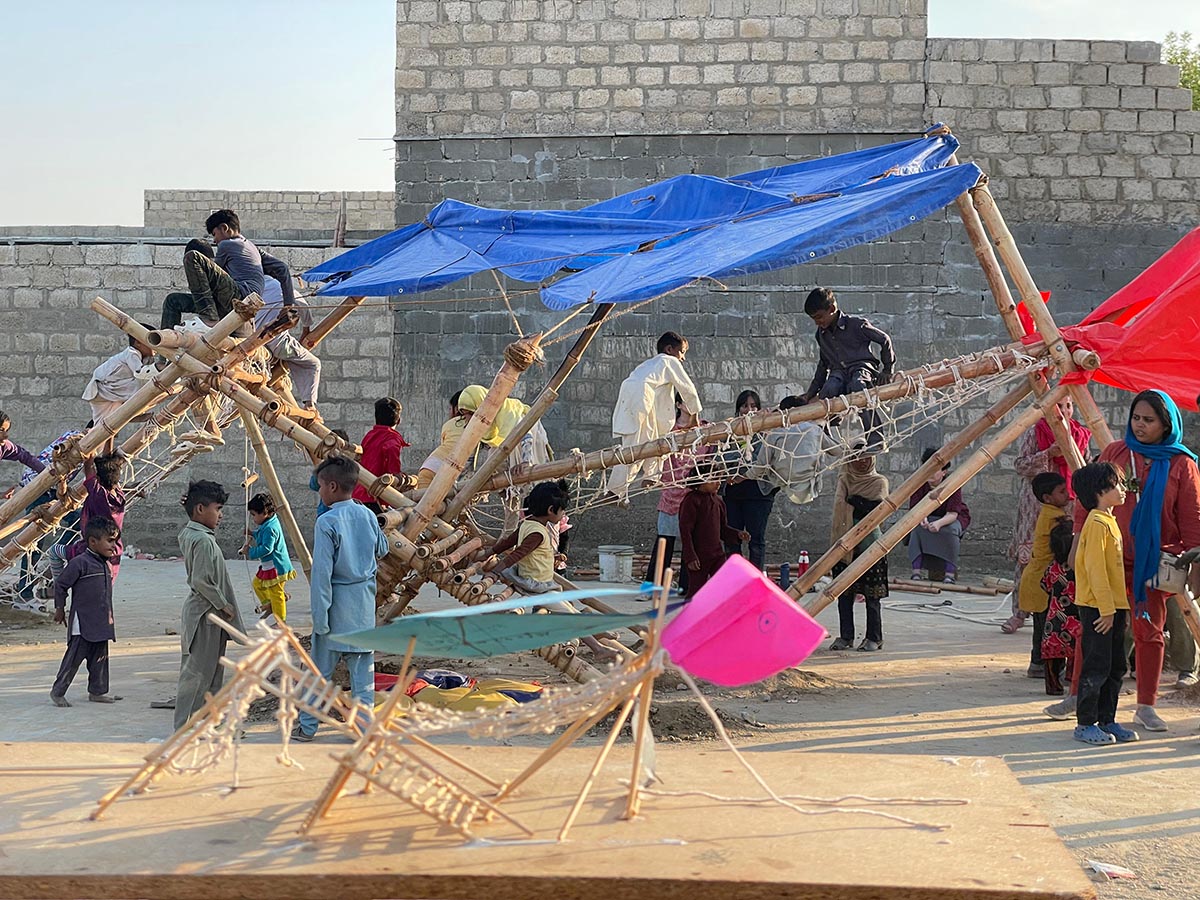
Project facts
Project name: Tidda
Architects/Interior Designer: Wajiha Mehdi Siddiqui/WM Creative Studio
Location: Surjani Town, Karachi-Pakistan
Completion Year: December 2024
Participation by: Project Lead Wajiha Siddiqui Mehdi
Project Team: Muhammad Mehdi, Abdullah Bajwa, Paras Shay Nusrat, Mahrukh Siddiqui, Muhammad Nafeel Qureshi
Names and Roles of Client(s & Partners): Abu Bakr (Local Representative), Jameel (Land Owner), Majid (Land Owner)
Student Volunteers (KU-NED-SSUET-Habib University): M Anwer Faheem Abbasi, Syed Sameel Fayyaz, Sumayya Akbar, Huma, Maryam, Zeenat, Dua, Areeba Munir, Wajeeha Bukhari, Hammal Abdullah, Adeel Zafar.
Editing and Documentary: Waqaruddin, Iza Rutkowska & Joel Espi (Artists)
Craftsmen & Community Helpers: Rizwan and his grandfather (Diggers), Ali Qureshi, Daniyal Qureshi, Javed Qureshi, Zubair Qureshi(Welders), Al Huzaifa & Mohsin Rathor (Tailors)
University of Karachi: Bilal & Talib (Guards), Admin Rayyan, Shareyar
Mothers/Women Participation: Rukiya Aunty, Nasir ki Ammi, Mrs Rajput
Children Participation: Nasir, Sabir, Bilal, Anika, Stefan, Sarim, Muhashir, Mahnoor Majed, Ayesha Majed, Tabish, Ayesha, Dua, Bilawal, Hamza, Sairah, Ealun Akhter
All images © Wajiha Mehdi Siddiqui of WMCreative Studio.
